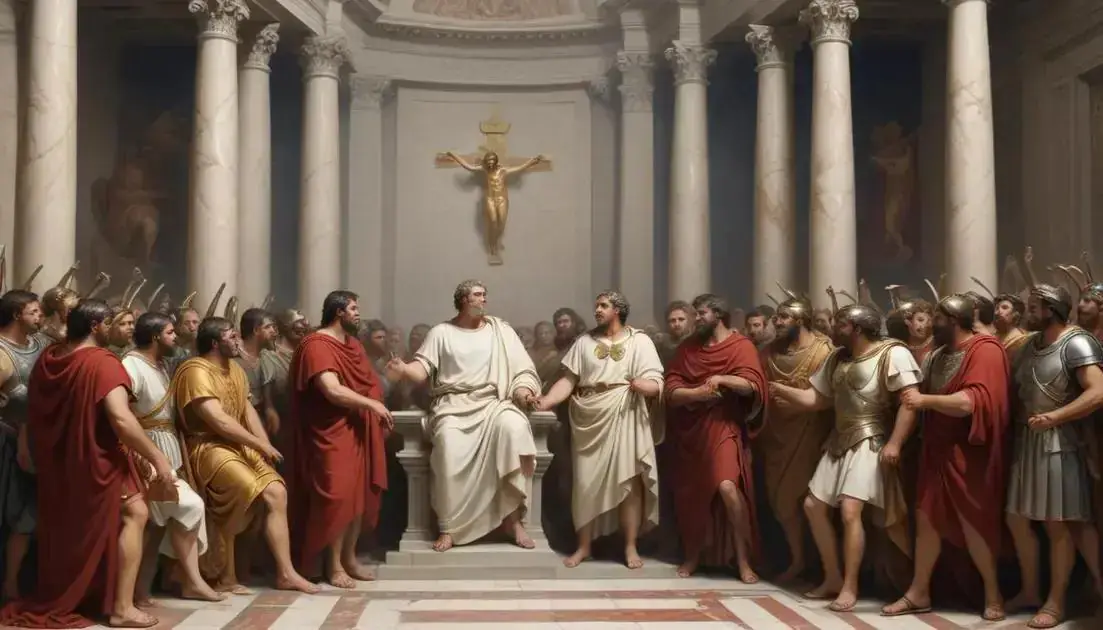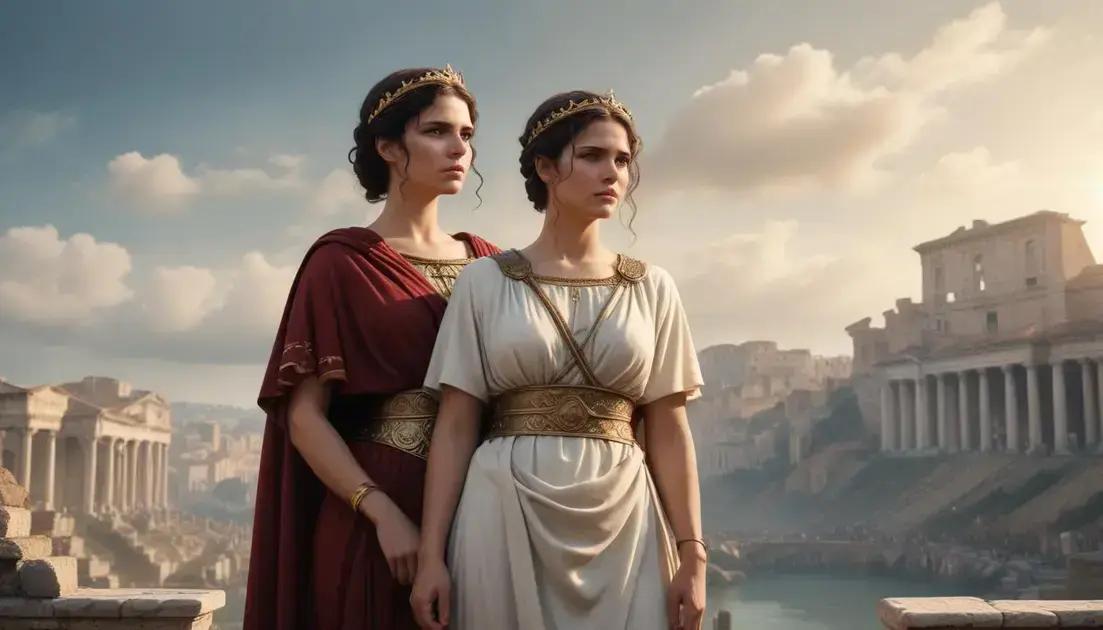
Alliance Between Church and Empire: Benefits and Tensions
The alliance between the church and the Roman Empire significantly influenced history, as it provided the church with newfound freedom while establishing a complex relationship where faith and politics intertwined. With the Edict of Milan, Christianity gained legal status, leading to societal shifts in values and beliefs. However, challenges persisted, including power struggles and cultural tensions. Understanding this historical context is essential for appreciating the ongoing interactions between religion and governance today.
The Church Empire alliance between the church and the Roman Empire brought unprecedented privileges but also tough challenges. How did this partnership shape history?<\/p>
Introduction to the alliance
The alliance between the church and the Roman Empire was a major turning point in history. This connection changed how religion and politics worked together. Constantine, the first Christian emperor, played a big role in this.
Before this alliance, Christians faced a lot of challenges. They often had to hide their beliefs to avoid persecution. With Constantine’s approval, Christianity gained a new status. It was no longer illegal, and churches began to grow in number and influence.
This relationship wasn’t just about benefits. It also had tensions. The church struggled to stay true to its spiritual mission while being close to political power. How could they balance faith with the demands of an empire?
Some church leaders worried that this close tie might lead to corruption. They feared that political power could change their faith. Yet, many also saw the chance to spread their message further.
Throughout history, this alliance changed the landscape of Europe. It shaped laws, culture, and society in many ways. Understanding this relationship helps us see how church and state can influence each other even today.
Historical context of Constantine’s reign
Constantine’s reign marked a dramatic shift in history. He became the first Roman Emperor to embrace Christianity. Before him, Christians faced persecution. Many were afraid to practice their faith openly.
Constantine changed this with the Edict of Milan in 313 AD. This law allowed religious freedom across the empire. Suddenly, Christians could worship without fear. Churches began to flourish.
During his reign, he also moved the capital from Rome to Byzantium. He named it Constantinople, which became a center for Christian teachings. This site was crucial in spreading Christianity throughout Europe.
Constantine wanted unity within his empire. He saw Christianity as a way to bring people together. By supporting the church, he aimed to create a stronger and more stable society.
However, not everyone agreed with his methods. Some traditional Roman pagans opposed him. They felt that he was changing age-old practices and beliefs. This tension created conflicts within the empire.
Through Constantine’s leadership, we see how power and religion can intertwine. His reign shaped the relationship between church and state, leaving a lasting legacy.
Benefits for the Church and the Empire
The alliance between the church and the empire brought many benefits for both sides. For the church, acceptance meant freedom. Christians could worship openly without fear of persecution. This was a huge shift from earlier times when they faced hardships.
The church gained power and influence. It could build more churches and attract followers. With support from the empire, Christianity spread rapidly across regions. People began to see the church as a stable force in their lives.
For the empire, this alliance created unity. By supporting Christianity, emperors hoped to strengthen their hold on power. A common religion helped bring different groups together. This was especially important in a vast empire like Rome.
Additionally, the church helped promote moral values. These values aligned with the goals of the empire. Both church and state wanted a society that was stable and peaceful.
When the church and the empire worked together, they could face challenges more easily. They shared resources and communicated better. This collaboration led to a new vision for society.
Pope and emperor became key players in politics. This partnership affected laws and daily life for many people. Together, they shaped culture and beliefs that lasted for centuries.
Challenges and tensions within the alliance
While the alliance between the church and the empire had many benefits, it also faced challenges. One major issue was the struggle for power. The church and the empire often clashed over who should hold authority.
Some church leaders wanted to follow their spiritual convictions. They sometimes felt that the emperor interfered. This tension led to conflicts about which values should guide the empire.
Many in the church worried that political power could corrupt spiritual missions. They feared that aligning too closely with the empire might change their beliefs. This concern led to debates among church leaders about their role in society.
Additionally, the alliance faced opposition from traditional pagans. They felt threatened by the rise of Christianity and resisted its influence. This opposition created social unrest in some areas, leading to riots and violence.
Another challenge was the difference in goals. The church aimed to spread faith and spirituality. In contrast, the empire focused on order and control. Balancing these priorities was not easy.
These challenges showed how complex the relationship was. The church had to navigate political landscapes while staying true to its beliefs. This balancing act remains a key issue in discussions about church and state today.
Conclusion and reflections on modern implications
The relationship between the church and the empire still matters today. It teaches us how faith and politics can connect. These lessons help us understand conflicts and cooperation in our own societies.
In many places, religion continues to influence government decisions. People often debate how much influence religion should have on laws. This dialogue reminds us of the past and the ongoing challenges.
Watching this history unfold helps us reflect on balance. It’s important for beliefs and governance to find common ground without losing their essence. This balance is crucial to keep societies unified and peaceful.
Understanding historical alliances helps us appreciate diversity. It shows how different beliefs can work together over time. This understanding can guide modern conversations about unity and respect.
The past teaches us that these connections can either strengthen or divide. By studying history, we can make smarter choices for the future. It’s about ensuring that faith enriches society without overshadowing other voices.
Conclusion
In conclusion, the alliance between the church and the empire shaped history in important ways. It taught us lessons about power, faith, and community. While this partnership had benefits, it also faced challenges that still echo today.
Understanding these dynamics helps us see how religion and politics interact in our world. We must remember that these connections can strengthen society or create division. With careful discussions, we can work towards balance, respecting diverse beliefs while fostering unity.
As we reflect on this history, it’s clear that lessons from the past can guide our future. By learning from what happened, we can approach modern issues with better insight. Ultimately, the goal is to ensure that faith and governance support each other positively, leading to a stronger, more inclusive society.


